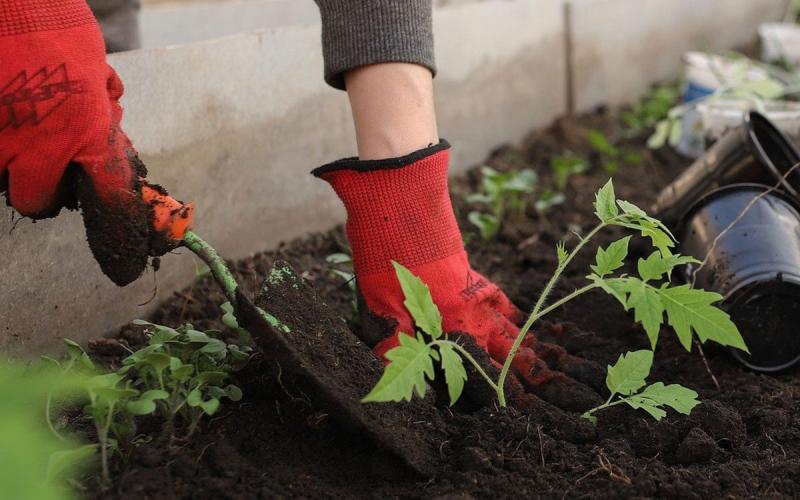Written by Vaughn Reints, SDSU Extension Horticulture Assistant, with direction, review, and contributions by Robin Buterbaugh, Amanda Bachman, and Prairey Walkling.
Introduction

Pollinators, such as bees, butterflies, bats, and birds, play a vital role in maintaining ensuring healthy ecosystems. Urban pollinator habitats are essential for providing food, shelter, and breeding grounds for these crucial species. In this article, we will explore various funding opportunities available for urban pollinator habitat projects in South Dakota, highlight their key benefits, and outline the application processes.
Importance of Urban Pollinator Habitats
Urban pollinator habitats contribute significantly to:
- Pollinators: Supporting a range of pollinator species.
- Soil Health: Improving soil structure and fertility through plant root systems.
- Human Well-being: Enhancing urban green spaces, which provide recreational and educational opportunities for residents.
Funding Options for Urban Pollinator Projects
Environmental Quality Incentives Program
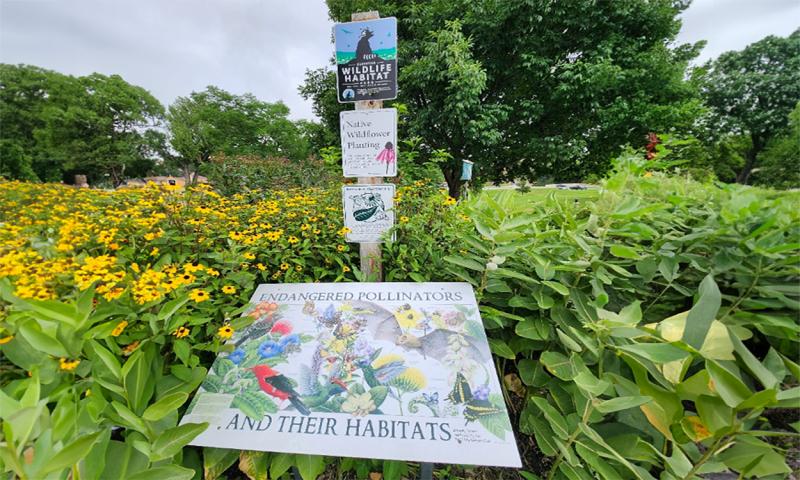
The Environmental Quality Incentives Program (EQIP), offered by the Natural Resources Conservation Service (NRCS), provides financial and technical assistance to help plan and implement conservation practices. For urban pollinator habitats, EQIP can cover costs related to site preparation, planting native species, and ongoing maintenance. There is no minimum amount of space required for urban pollinator habitat projects under EQIP. The program is "size neutral," meaning it can accommodate a wide range of plot sizes, from very small urban gardens to larger community spaces. However, the practicality and value of implementing a project on very small plots may vary, and it’s essential to ensure that the space is sufficient to address specific conservation concerns effectively.
Contracts through EQIP typically range from two to three years, with the possibility of extending up to 10 years, although longer contracts are generally avoided. The primary reason for this is the fixed payment structure of EQIP; once a contract is established, the payment amount is locked in and does not adjust for inflation. As a result, if project costs increase over time, particularly for materials like steel or other resources, the financial assistance provided may no longer cover these additional expenses. To mitigate this risk, NRCS encourages shorter contract durations to ensure that the funding remains effective and sufficient throughout the project's implementation.
Key Benefits
- Technical Support: Access to NRCS specialists for planning and implementing projects.
- Financial Assistance: Cost-share for conservation practices, reducing the financial burden on project initiators.
Application Process
- Determine Eligibility: Ensure you have a connection to agriculture or cropland, even on a small scale, to qualify for funding.
- Develop a Conservation Plan: Work with NRCS conservation planners to create a detailed plan outlining the project's goals and the conservation practices to be implemented as part of your EQIP application.
- Submit Application: Complete and submit the application, including the conservation plan, through your local NRCS office. If you do not succeed in getting your project funded the first time, you can reassess and reapply next year.
- Implement Project: Upon approval, proceed with the project as outlined in the conservation plan, utilizing the financial and technical assistance provided.
- Maintain Habitat: Regularly monitor and manage the pollinator habitat to ensure its sustainability and effectiveness in enhancing urban ecosystems.
Regional Conservation Partnership Program
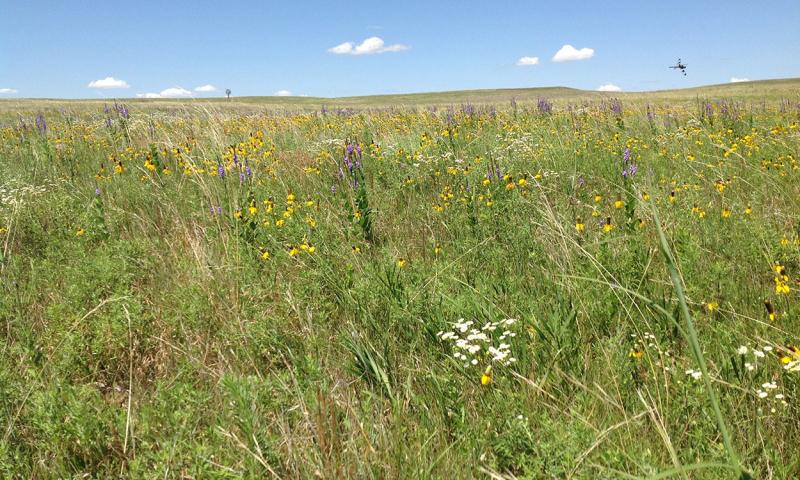
Several non-profit organizations offer funding opportunities for pollinator habitats through the NRCS's Regional Conservation Partnership Program (RCPP). These organizations provide funding and technical support for projects that align with their conservation goals. Projects address specific problems, such as water quality.
Organizations
- Ducks Unlimited: Focuses on wetland and waterfowl habitat conservation.
- Pheasants Forever: Works on supporting upland habitat conservation.
Key Benefits
- Collaborative Opportunities: Partnering with established organizations in our region that share a common conservation vision.
- Funding Sources: Access to additional funding streams beyond federal programs.
Agricultural Conservation Easement Program
The Agricultural Conservation Easement Program (ACEP) provides financial and technical assistance to conserve agricultural lands and wetlands, which can be adapted for urban pollinator habitats. While primarily focused on rural areas, it can be used for larger urban green spaces dedicated to conservation.
Key Benefits
- Long-term Protection: Ensures permanent conservation of valuable habitats; thirty-year plans or perpetual.
- Funding for Easements: Financial support for establishing conservation easements.
Additional Funding Sources
Xerces Society: The Xerces Society provides grants and technical support for a variety of pollinator conservation projects. Additionally, the Xerces Society offers a variety of educational publications, resources, and guidelines for creating effective pollinator habitats.
Key Benefits
- Expert Guidance: Access to extensive resources and expertise in pollinator conservation.
- Educational Resources: Tools and materials for public education and community engagement.
Implementation and Maintenance
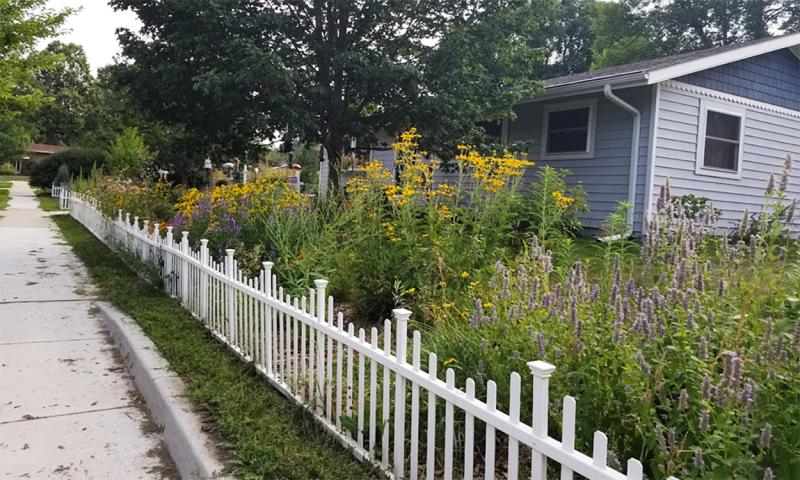
The successful implementation and maintenance of urban pollinator habitat projects requires careful planning and commitment by everyone involved. Before getting started on your project, it is important to consider the following key steps.
Key Steps
Three essential steps to ensure a thriving urban pollinator habitat include:
- Site Preparation: Clear the site of invasive species and prepare the soil for planting.
- Planting: Choose native plants that provide nectar and pollen throughout the growing season.
- Maintenance: Regularly monitor the site, manage invasive species, and ensure that plants are thriving.
Scenarios for Financing Pollinator Habitat Projects
1. Eligibility and Overview
Urban pollinator habitat projects can be supported through the Environmental Quality Incentives Program (EQIP). This program offers financial and technical assistance for a variety of conservation practices, including the establishment of pollinator plants.
Example Scenario:
- A community garden in a city neighborhood applies for funding from the Environmental Quality Incentives Program to convert unused land into a pollinator habitat.
- The garden already meets the applicant and land eligibility criteria, making it a strong candidate for funding support from the program.
2. Challenges for Smaller Producers
Small-scale urban producers, such as homeowners with limited space, can still qualify for financial assistance under specific conditions. For instance, raised beds can be considered part of the natural soil profile if they are on the ground and used for growing plants beneficial to pollinators.
Example Scenario:
- A homeowner with a quarter-acre lot, including their house, wants to convert their raised vegetable beds into pollinator-friendly gardens.
- Despite the small size, they qualify for EQIP assistance because their project enhances the natural soil profile and addresses conservation concerns by converting annual beds to perennial plantings.
3. Case-by-Case Basis
Each project is evaluated individually to ensure it meets specific conservation needs and criteria. Flexibility in the program allows for creative solutions tailored to urban agricultural settings.
Example Scenario:
- A local school plans to create a pollinator garden to serve as an educational tool for students. The project is unique, involving multiple small plots across the schoolyard.
- The school works together with their local NRCS office and Conservation District to develop a conservation plan for the project. While the school is not likely eligible for EQIP funding, the school receives assistance from NRCS about other grant opportunities they can apply for.
4. Program Flexibility
The USDA Natural Resources Conservation Service is open to creative solutions, welcoming various types of producers, especially those involved in urban agriculture projects.
Example Scenario:
- An urban farm, which consists of multiple small plots scattered throughout a city, applies for funding to establish pollinator habitats on each of the farm's plots.
- The USDA Natural Resources Conservation Service supports the urban farm's initiative by providing them with technical and financial assistance, recognizing their innovative approach to urban farming.
5. Community and Organizational Partnerships

Collaborating with local organizations can enhance the reach and impact of pollinator habitat projects. Partnerships with groups, like the South Dakota Soil Health Coalition or your local Conservation District, can provide additional support and resources for projects.
Example Scenario:
- A city parks department partners with a local non-profit organization to create pollinator corridors in public parks throughout the city.
- By leveraging both technical assistance from the local USDA Natural Resources Conservation Service office, and resources from organizations, like the South Dakota Soil Health Coalition or the local Conservation District, they implement a comprehensive plan that benefits the entire community.
6. Funding and Technical Assistance
A range of practices are available through EQIP, depending on the specific resource concerns identified in the field. Additional funding sources include state conservation districts and other non-profits dedicated to pollinator conservation.
Example Scenario:
- A Conservation District applies for state funding to support multiple small pollinator projects across the city.
- They also utilize technical assistance from NRCS to ensure the success of these projects, addressing various resource concerns, such as soil health.
7. Practical Advice
Local Conservation Districts often have access to additional funding through state commissions, and other programs, such as the Bee and Butterfly Habitat Fund, offer targeted support for pollinator projects.
Example Scenario:
- A community center seeks funding to create a butterfly garden.
- They apply for grants from the Bee and Butterfly Habitat Fund and secure additional support from the state conservation commission, ensuring the garden's establishment and long-term maintenance.
8. Real-Life Example
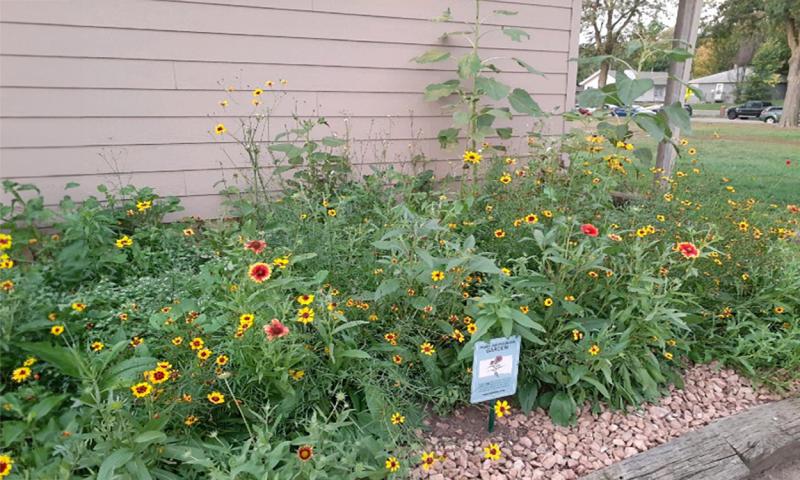
The Minnehaha Conservation District (MCD), in partnership with the City of Sioux Falls, launched the Prairie and Pollinator Garden Program to meet the growing demand for urban pollinator habitats. After community surveys identified education and affordability as key barriers, MCD developed an affordable Prairie and Pollinator Garden Kit. Each $15 kit includes an educational booklet, a seed packet for a 100-square-foot garden, and a metal sign to inform the community about the garden's purpose.
Results:
- Since its launch in 2023, over 200 kits have been sold, demonstrating strong community engagement and commitment to urban ecosystems and conservation.
- This program exemplifies how city partnerships can effectively provide resources to support pollinator habitats and enhance local green spaces.
By considering these scenarios and leveraging the available funding options, urban pollinator habitat projects can thrive, contributing to the health and well-being of urban ecosystems and communities.
Conclusion
Creating and maintaining urban pollinator habitats in South Dakota has numerous ecological and societal benefits. By leveraging available funding options, such as EQIP, ACEP, and support from non-profit organizations who partner with NRCS through RCPP, you can contribute to the conservation of vital pollinator species.
For more information on how to start your urban pollinator habitat project and navigate the funding process, contact your local NRCS office or visit the Xerces Society website. Engage with city officials and educational boards to explore enhancements to green spaces that offer educational opportunities and improve the aesthetics of the urban ecosystem. As you work towards creating a thriving habitat, consider planting a bee lawn to add color and vibrancy to your green spaces, benefiting both pollinators and the community!
Additional Resources
Expert Contacts
- Rachel Lawton (Frei), Urban Conservationist, USDA-NRCS South Dakota (EQIP, CSP)
- Brandon Walter, State Biologist, NRCS South Dakota (CRP)
- Val Dupraz, Assistant State Conservationist (Programs) NRCS South Dakota (RCPP, ACEP)
- Cindy Zenk, South Dakota Soil Health Coalition (319 Watershed Program)
- Chris Goldade, South Dakota Soil Health Coalition
- Alina Krone-Hedman, Minnehaha Conservation District, Urban Conservation Education Coordinator
Kits and Resources
- Pollinator Kits, Minnehaha Conservation District
- Habitat Kits, Xerces Society
- Backyard Pollinator Gardens, SD Soil Health Coalition
- Honeybee Habitat Initiative, USDA Farm Service Agency


